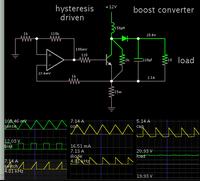biswaIITH
Full Member level 4
I am designing one 1 kW boost pfc rectifiers.I am planning to use average current mode control(ACMCs).In stead of using dedicated Average current mode ICs ,can we achieve ACMC using opamps i.e. can we design the entire feedback circuit using opamps ,error amp etc..If yes can someone suggest me any book or source from where i can learn about the compensator design to be used in the feedback circuit for the same..
